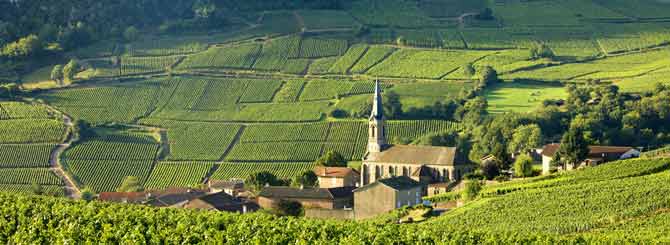The World's Most Expensive Pinot Noirs

The World's Most Expensive Pinot Noirs

Pick a list of the most expensive Burgundies and where would you put the fabled Domaine de la Romanée-Conti? At the top?
Maybe it's time to think again, because while DRC is certainly still one of the world's most expensive wines, it has been not just overtaken at the top, but almost lapped. In fact, comparing the global average prices of the most expensive Pinot Noirs listed on Wine-Searcher shows that DRC, which sat proudly at the top of such lists for years, has suddenly slowed down.
| Related stories: |
| The World's Best Burgundies |
| The World's Most Wanted Pinot Noir |
| Willamette Valley: The New Burgundy? |
Of the wines on the list below, DRC's Romanée-Conti Grand Cru has had the lowest increase in the past 12 months and has been completely outstripped by its main competitor – DRC's global average bottle price rose by 13.4 percent, but the top wine saw a gigantic 81.3 percent rise. On average, the 10 wines below have seen their global average prices rise by an average of 40.5 percent, which certainly flies in the face of suggestions a couple of years back that Burgundy's price rises had peaked.
Today is International Pinot Noir Day, when devotees of the grape will raise a glass in its honor in all corners of the world, but probably not any of the wines on this list will be opened.
While Pinot has gained a huge following worldwide – among both consumers and producers – it's fair to say that most people will celebrate by cracking a bottle from beyond Burgundy – it will be a lot cheaper, even comparing lower-tier Burgundy. You can get a basic Bourgogne Rouge for an average price of $30, or a Côte de Nuits-Villages for around $40, but a Willamette Pinot from Oregon will set you back an average of just $29, while a Central Otago Pinot from New Zealand has an average price of $28.
But if you want to spend silly money, then Burgundy is the place to go, as our list below demonstrates. The list also doubles as the list of Burgundy's most expensive red wines and will probably make up the majority of our overall list of most expensive wines. It's hard to imagine which wines will supplant them.
The World's Most Expensive Pinot Noirs Wines on Wine-Searcher:| Wine Name | Score | Ave Price | |
|---|---|---|---|
| Domaine Leroy Musigny Grand Cru | 98 | $32,974 | |
| Domaine de la Romanée-Conti Romanée-Conti Grand Cru | 97 | $21,976 | |
| Domaine Roumier Musigny Grand Cru | 96 | $15,705 | |
| Domaine Leroy Chambertin Grand Cru | 98 | $11,315 | |
| Domaine Leroy Richebourg Grand Cru | 97 | $8688 | |
| Leroy Domaine d'Auvenay Mazis-Chambertin Grand Cru | 98 | $8025 | |
| Leroy Domaine d'Auvenay Les Bonnes-Mares Grand Cru | 97 | $7471 | |
| Domaine Leroy Romanée-Saint-Vivant Grand Cru | 98 | $6913 | |
| Domaine Leroy Latricières-Chambertin Grand Cru | 97 | $6848 | |
| Domaine Leroy Clos de la Roche Grand Cru | 96 | $6680 |
Leroy's domination of the list is almost complete. The last time we looked at these wines, back in 2019, there were six Leroy wines (either from Domaine Leroy or its Domaine d'Auvenay subsidiary); this year there are eight. Only DRC and Roumier stand between Leroy and total control of the list.
But let's look at the Leroy Musigny, of 81.3 percent price rise fame. On July 31 last year it had a global average price of $17,224. Today it is almost $33,000 and even that's a step back from its peak last month of $35,500.
Going back five years, the pricing story is even more dramatic. The Leroy Musigny had a global average price of just $5873 a bottle in August 2016; at the same time DRC's Romanée-Conti had an average price tag of $13,482. That is an astounding comparison. Even the Roumier Musigny looks sluggish by Leroy's standard, even though it has tripled since 2016.
Burgundy's vertiginous price rises – particularly at the top end – can be put down, in most basic terms, to the immutable law of supply and demand. There is a finite supply of a product that has a great reputation and there is an increased number of wealthy collectors and investors who can look at price rises like this and see the potential of a huge payoff down the track.
Whether this is good for Burgundy – there will soon come a time when these wines will be beyond the reach of all but a vanishingly small number of the super-rich or very well connected, meaning they become, in effect, irrelevant to wine consumers – is a moot point; no winemaker in history ever turned down the offer of a higher price. After all, that is how the market works.
It seems those predictions that Burgundy price hikes would level off haven't eventuated – they merely paused to take a breath before sprinting off again.

